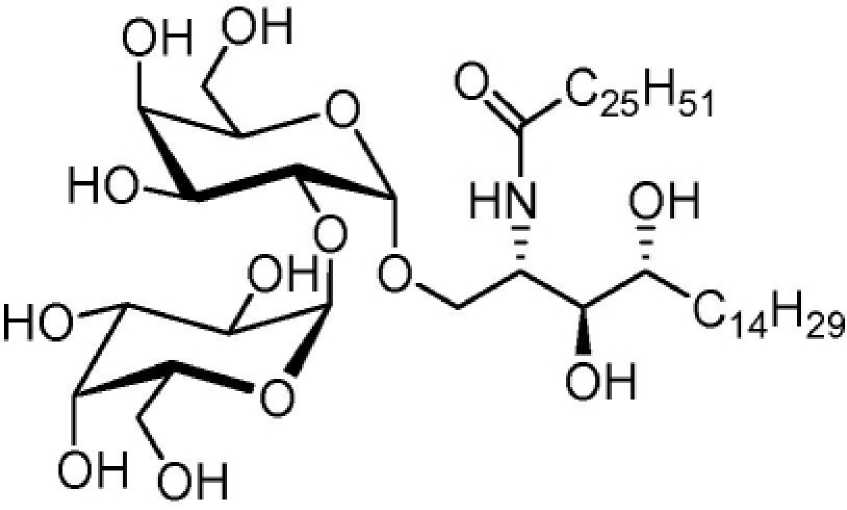Veerapen et al.
Page 2
Sponsored Document Sponsored Document Sponsored Document

Abstract
We herein report a faster and less cumbersome synthesis of the biologically attractive, α-galactosyl
ceramide (α-GalCer), known as KRN7000, and its analogues. More importantly, the use of a silicon
tethered intramolecular glycosylation reaction gave easy access to the diglycosyl ceramide Gal
(α1→2)GalCer, which has been shown to require uptake and processing to the biologically active
α-GalCer derivative.
Keywords
CD1d; KRN7000; iNKT; Galactosyl(α1-2)galactosyl
CD1d is a nonpolymorphic glycoprotein expressed on the surface of antigen-presenting cells
(APCs). It is specifically associated with presenting lipid antigens that activate the distinctive
class of T cells, known as invariant Natural Killer T (iNKT) cells. iNKT cells display
characteristics of both T cells and NK cells and play a crucial role in diverse immune responses
and other pathologic conditions. When the synthetic glycolipid α-galactosyl ceramide (α-
GalCer), known as KRN7000 (1), is bound to CD1d and presented to the T cell receptors
(TCRs) on the surface of iNKT cells, the latter are activated to release diverse cytokines,
including both Th1 and Th2 cytokines. It is believed that the release of Th1 cytokines may
contribute to antitumour and antimicrobial functions while that of Th2 cytokines may help
alleviate autoimmune diseases such as multiple sclerosis and arthritis. α-GalCer and its
derivatives have proved to be and remain invaluable tools in understanding the functioning of
CD1d and NKT cells in a wide range of immune responses. As part of various ongoing studies,
easy access to relatively extensive quantities of these substrates is, therefore, required.
Published as: BioorgMed Chem Lett. 2009 August 01; 19(15): 4288-4291.
More intriguing information
1. Endogenous Heterogeneity in Strategic Models: Symmetry-breaking via Strategic Substitutes and Nonconcavities2. AJAE Appendix: Willingness to Pay Versus Expected Consumption Value in Vickrey Auctions for New Experience Goods
3. Two-Part Tax Controls for Forest Density and Rotation Time
4. The name is absent
5. Does Market Concentration Promote or Reduce New Product Introductions? Evidence from US Food Industry
6. Prizes and Patents: Using Market Signals to Provide Incentives for Innovations
7. APPLICATIONS OF DUALITY THEORY TO AGRICULTURE
8. THE ECONOMICS OF COMPETITION IN HEALTH INSURANCE- THE IRISH CASE STUDY.
9. Mergers under endogenous minimum quality standard: a note
10. Word searches: on the use of verbal and non-verbal resources during classroom talk